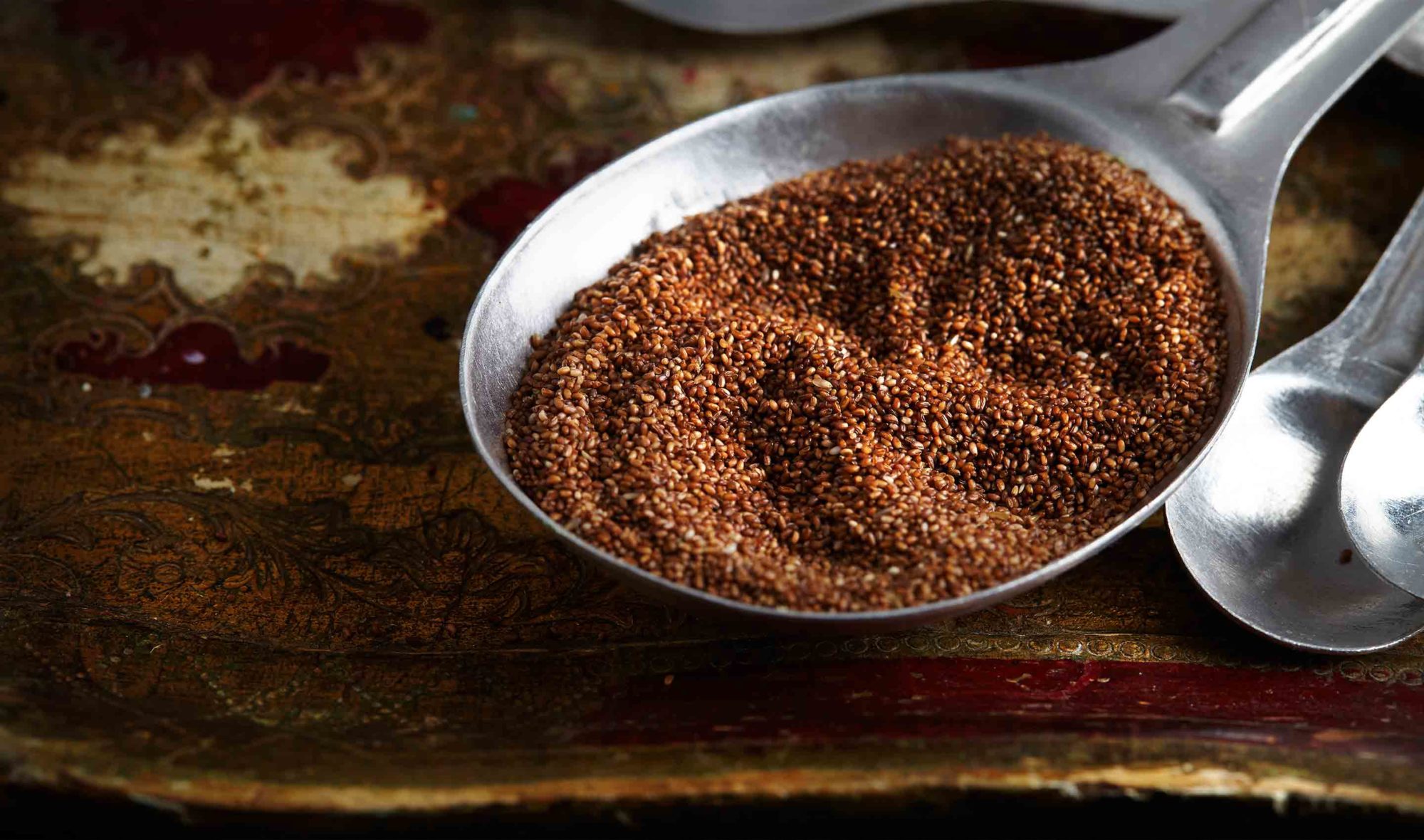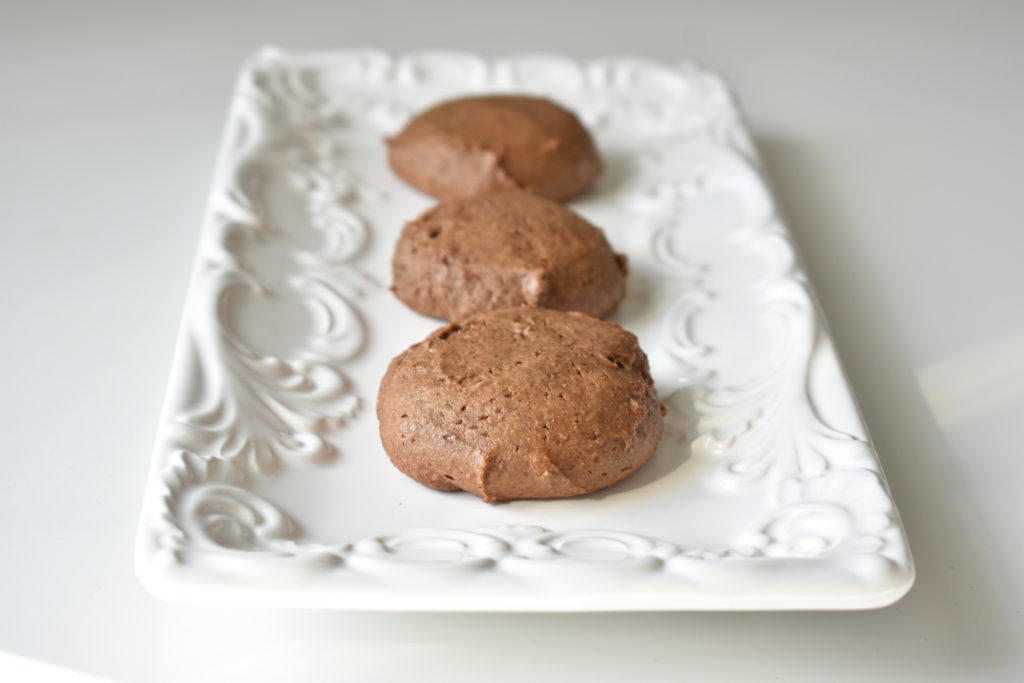
Join PN Level 2 for less than $9 USD/day! Affordable monthly payments now open.

Teff is a gluten-free, protein-rich grain that has a mild, nutty flavor. Half a cup of uncooked teff contains almost 13g of protein, plus nearly 8g of fiber. Teff also offers minerals like calcium, iron, potassium, and zinc. Teff can be purchased as a whole grain or as flour, though its whole-grain form offers most nutritional benefits. Look for teff in your local health food store. Teff can be cooked and eaten in a similar way to oatmeal or quinoa, or mixed into baked goods, soups or stews.
Teff is a grain—a gluten free grain! It grows predominantly in Ethiopia and Eritrea.
Fun facts: One pound of teff grains can grow an acre of teff (in comparison with wheat, which takes about 100 pounds of grains to grow one acre). Teff is also the fastest sprouting grain, taking only 36h to sprout!
Teff is less than 1mm in diameter (similar to a poppy seed) and comes in a variety of colors, from white and red to dark brown. This grain has a very mild, nutty flavor.
Half a cup of uncooked teff has about 354 calories, 12.8g of protein, 70.6g of carbohydrates, 7.7g of fiber, and 2.3g of fat.
Teff is rich in B vitamins and is a great source of minerals including calcium, copper, iron, magnesium, manganese, phosphorus, potassium, and zinc.
Teff can be purchased as a whole grain or ground into flour. To get its full nutrient benefits, it’s best to purchase the whole grain. Whole grain teff can be found in most health food stores.
Store uncooked teff in a cool, dry place in a tightly sealed container. Uncooked teff will keep for up to one year if properly stored.
Once cooked, store teff in the fridge for up to five days.
Uncooked, whole grain teff can be used in baking (cakes, breads, muffins, etc) much like you would use seeds. Teff is also a great addition to soups and stews. It serves as a nutritious thickening agent, making it great for heavier, cool-weather meals.
To cook on its own, put 1/2 cup teff grains, 2 cups water, and 1/4 teaspoon of salt in a saucepan. Bring contents to a boil and then reduce the heat and simmer for about 15-20 minutes or until water is absorbed. Remove from the heat and let stand for about five minutes. You can then use it in a similar fashion as quinoa or oats.

These cookies are soft and delicious. They make for a great snack or dessert and are sure to please.
Prep Time: 10 minutes Cook Time: 20 minutes Yield: 20 cookies
Preheat your oven to 350 degrees Fahrenheit.
Put all ingredients, with the exception of the water, into your high-power blender or food processor. Process until a thick dough forms. Add the water and pulse until the dough is thick and creamy. (Note: if you don’t have a high-power blender or food process, blend together the banana, water, and almond butter in your blender, transfer to a bowl, add remaining ingredients, and stir until well combined.)
Using a small ice cream scoop or medium-sized spoon, place batter scoop by scoop onto a cookie tray lined with parchment paper (the number of cookies the batter makes will depend on how big you make your cookies).
To slightly flatten and shape the cookies rinse your clean fingertips under running water, and then shape as desired. When the dough starts to stick to your fingers, re-rinse your fingertips and continue.
Place prepared cookie tray into the preheated oven and cook for about 20 minutes (until the top of the cookies have little holes in them and no longer stick to your fingers when lightly touched). The cookies will feel a bit soft at the 20-minute mark but the outer shell will be crisp. Remove them from the oven and let them cool. Once cool, gobble them up and store any leftovers in the fridge.
Precision Nutrition’s Encyclopedia of Food expands every single month as we highlight new foods and showcase beautiful food photography. If you’d like to stay up to date, simply click this link. From there, we’ll send you a FREE copy of our recipe book. We’ll also let you know when new and delicious foods are added to the site.
Teff is a gluten-free, protein-rich grain that has a mild, nutty flavor. Half a cup of uncooked teff contains almost 13g of protein, plus nearly 8g of fiber. Teff also offers minerals like calcium, iron, potassium, and zinc. Teff can be purchased as a whole grain or as flour, though its whole-grain form offers most nutritional benefits. Look for teff in your local health food store. Teff can be cooked and eaten in a similar way to oatmeal or quinoa, or mixed into baked goods, soups or stews.